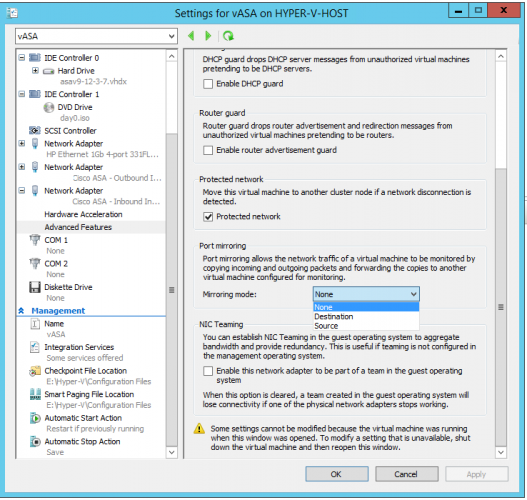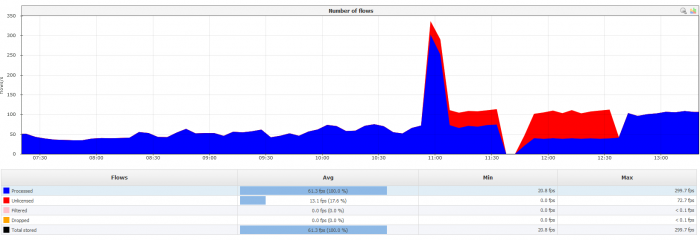Virtualization is ubiquitous in the IT world. However, with the ever-increasing complexity, we are faced with the fact that our old tools are insufficient nowadays. That is why we need to accustom ourselves to diverse types of NetFlow configuration. In this post, we will examine the case of Hyper-V, a hypervisor developed by Microsoft.
Configuration
There are two types of Hyper-V NetFlow configuration: Configuration implemented via port mirroring and Configuration done with extension modules. Let's check out both of them.
Configuration implemented via port mirroring
Port mirroring is enabled on each and every machine you want to monitor and then set up for the desired VM to be the source or destination of mirrored traffic:

Configuration done with extension modules
The second available option is to use sFlow monitoring via the extension available from the host sFlow. The extension can be downloaded from the Host sFlow website. Afterward, install it on your Hyper-V hosts. During the installation, you will need to set your NetVizura collector IP and sampling rate.
Once you have completed all the previously mentioned steps, configure the extension on every card you are using on Hyper-V in Virtual Switch Manager:

When applying the described configuration, you will receive a warning that a quick connection loss is possible, still in most cases, you won't even notice it.
Now, your Hyper-V NetVizura NetFlow configuration is completed, and you should start receiving traffic from the hosts inside NetVizura.





